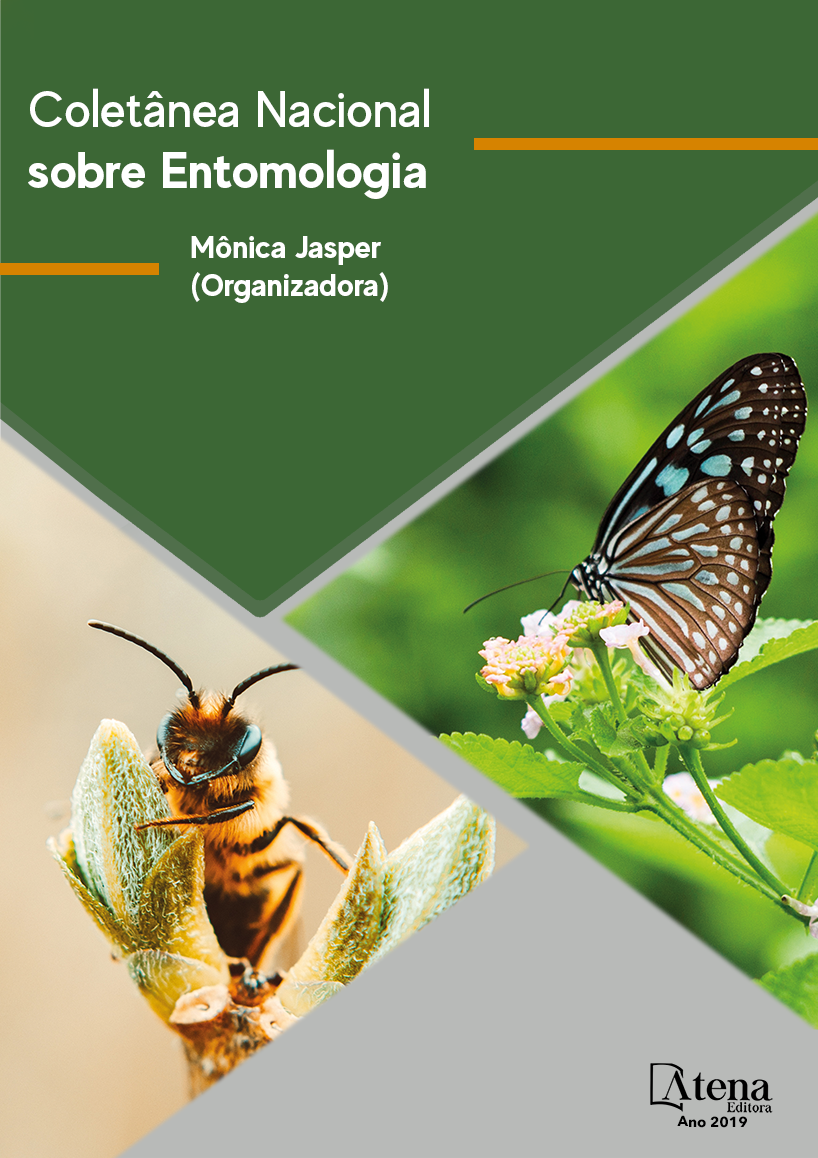
ENTOMOFAUNA ASSOCIADA AO FINAL DE CICLO DA CULTIVAR BMX LANÇA IPRO
Durante seu ciclo a soja está sujeita
ao aparecimento de inúmeros insetos, podendo
ser estes pragas, os quais tem potencial de
reduzir a produtividade, bem como, o ataque no
final do ciclo de cultivo pode afetar diretamente
a qualidade dos grãos, ou inimigos naturais os
quais podem ajudar a manter as pragas abaixo
do nível de dano econômico. O presente estudo
foi realizado em uma lavoura experimental
pertencente ao IRDeR, Augusto Pestana/RS,
em uma área de 0,4ha. A cultivar utilizada foi
BMX Lança IPRO. A semeadura foi realizada
em 14/12/2017. As avaliações foram efetuadas
semanalmente a campo quando a cultivar
atingiu R1até R8. Não foram aplicados métodos
de controle para as pragas. As amostragens
foram realizadas utilizando-se do método de
pano de batida, armadilhas do tipo Provid.
Os insetos foram levados ao Laboratório de
Zoologia/Entomologia da Unijuí para contagem
e identificação. A praga encontrada em maior
número em todos os estádios avaliados foi o
percevejo Euschitus heros (58 exemplares).
Já o inimigo natural teve destaque em todas
as avaliações foi a Tesourinha (Doru ssp.) (22
exemplares). Em nenhuma das avaliações
foram encontrados insetos pertencentes a
Ordem Lepidóptera.
ENTOMOFAUNA ASSOCIADA AO FINAL DE CICLO DA CULTIVAR BMX LANÇA IPRO
-
DOI: 10.22533/at.ed.5041909074
-
Palavras-chave: Inimigos Naturais, Manejo Integrado de pragas, Nível de Dano Econômico.
-
Keywords: Natural Enemies, Integrated Pest Management, Economic Damage Level.
-
Abstract:
During its cycle the soybean is subject to the appearance of numerous
insects, being these pests, which have potential to reduce the productivity, as well as,
the attack at the end of the crop cycle can directly affect the quality of the grains, or
natural enemies the which help keep pests below the level of economic damage. The
present study was carried out in an experimental plot belonging to the IRDeR, Augusto
Pestana / RS, in an area of 0.4ha. The cultivar used was BMX Launches IPRO. The
sowing took place on 12/14/2017. The evaluations were carried out weekly in the field
when the cultivar reached R1até R8. No control methods were applied to the pests.
The samplings were performed using the beat cloth method, Provid type traps. The
insects were taken to the Unijuí Zoology / Entomology Laboratory for counting and
identification. The most frequently found pest in all evaluated stages was the Euschitus
heros (58 specimens). Already the natural enemy was highlighted in all the evaluations
was the Tesourinha (Doru ssp.) (22 copies). In none of the evaluations were found
insects belonging to the Lepidoptera Order.
-
Número de páginas: 15
- Nathália Lela de Carvalho
- Valéria Escaio Bubans
- Luana Jensen Pietczk
- Osório Antonio Luchese
- Gustavo Muzialowski
- Jardel Mateus Ullrich
- Afonso Lopes de Barcellos
- Nathalia Leal de Carvalho


